









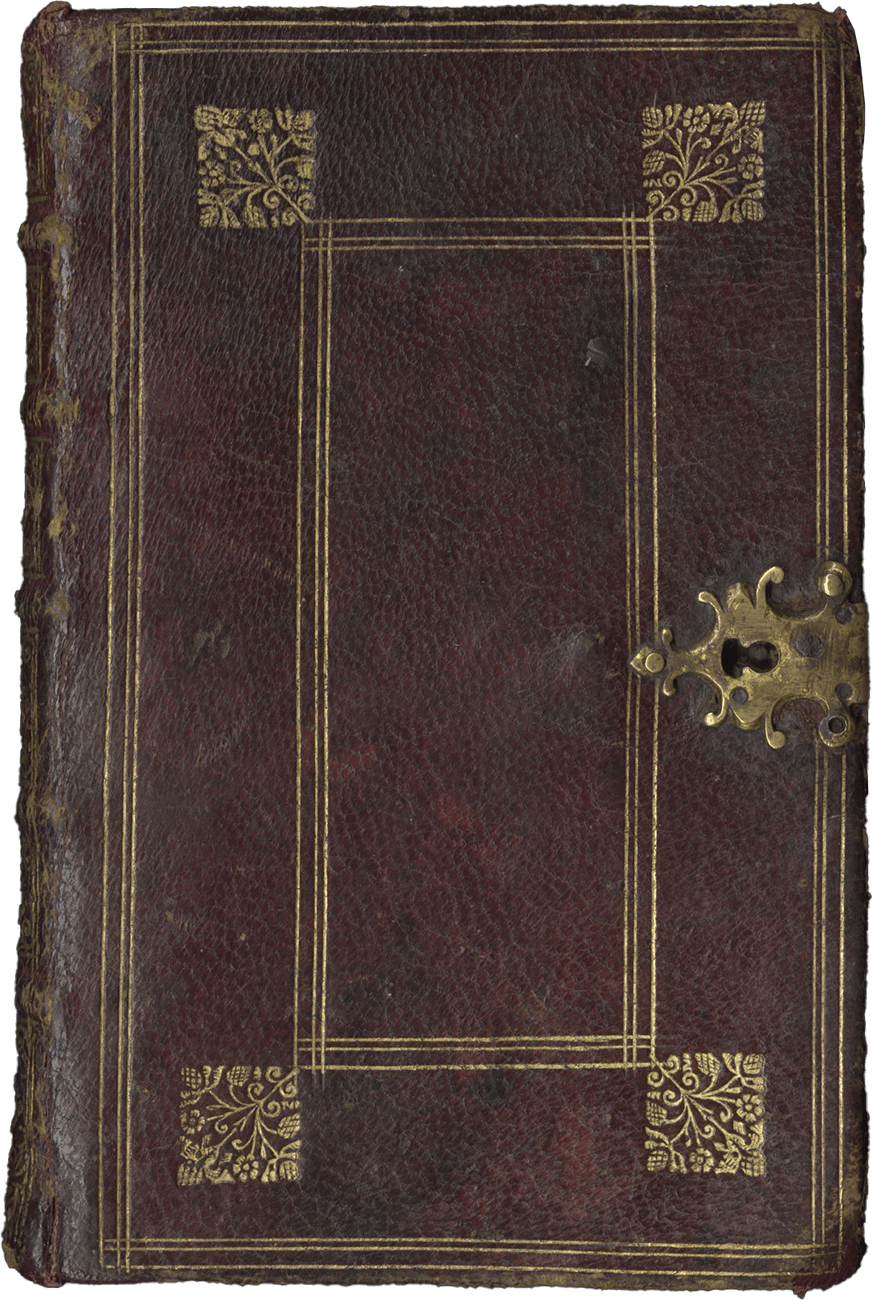
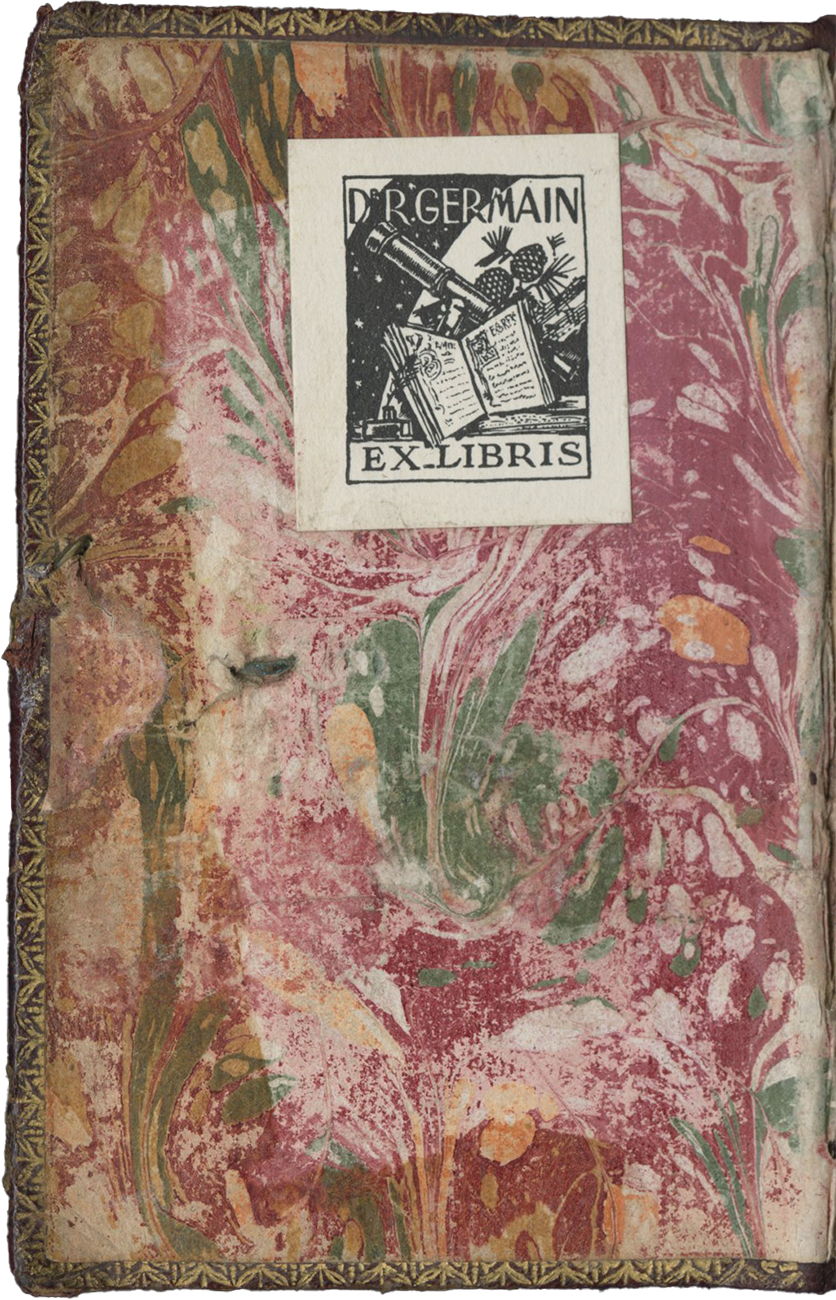
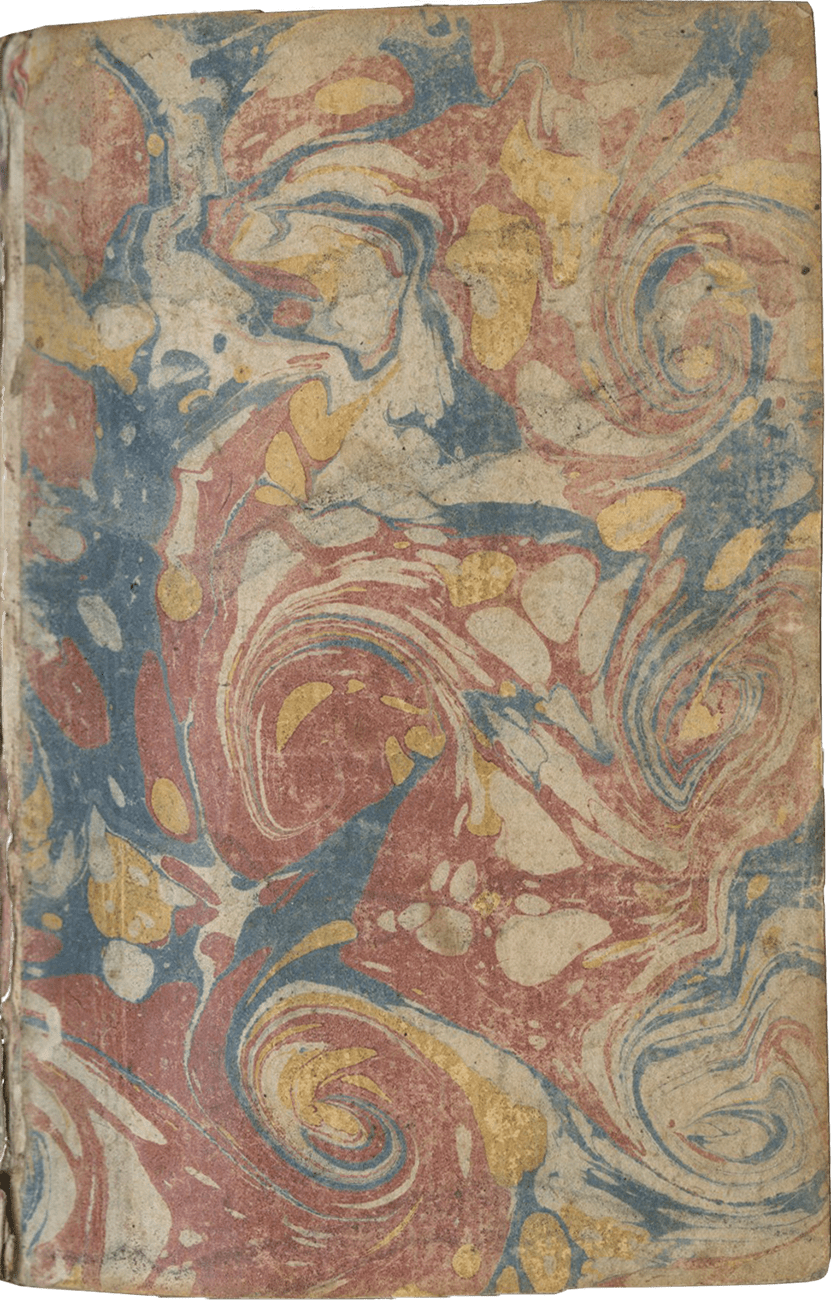















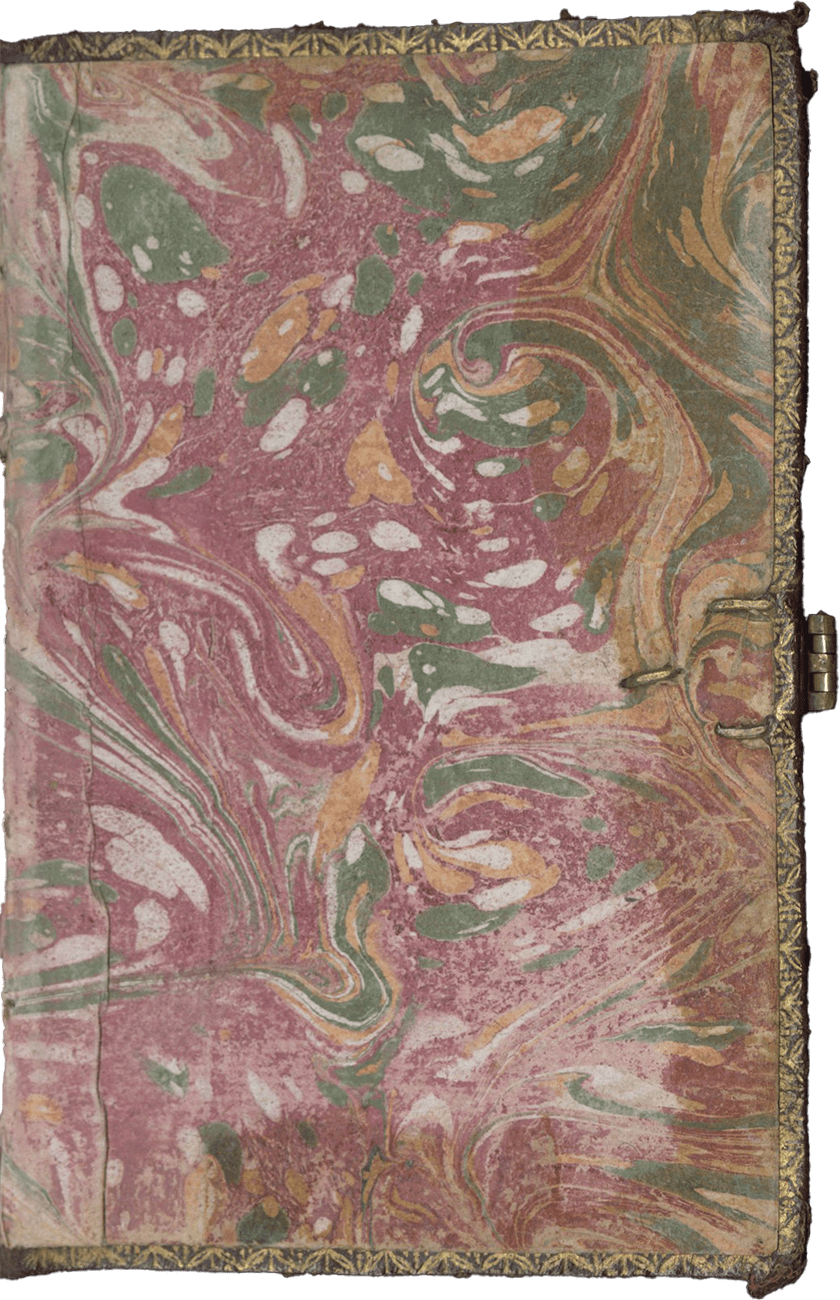
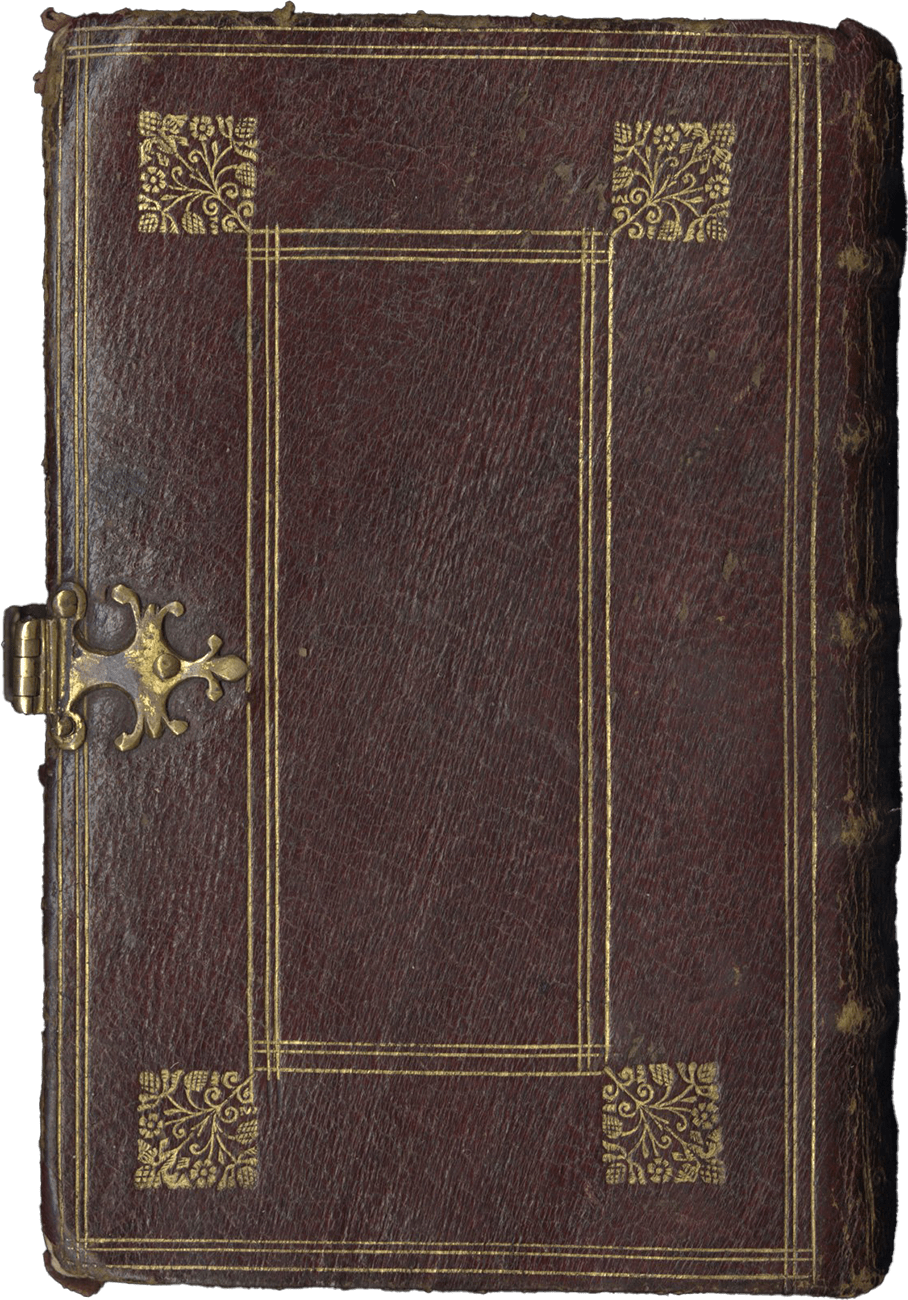
Description
This Book of Hours is a valuable witness to the developments of French illumination around 1500. First illuminated in Paris by the Master of Robert Gaguin, it became the property of a noble lady of the House of Clavel who commissioned from the Master of Benigne Serre active in Dijon an exquisite miniature of the Meeting at the Golden Gate, the most refined and third known work of this intriguing artist. An elegant seventeenth-century binding in the style of Auguste Duseuil contributes to the charm of this complete manuscript.
i (paper) + 77 folios + iii (paper), on parchment, modern foliation in the top outer corner recto, 1-77, including the front flyleaf, complete (collation, i8, ii-iv6, v6[+1, added as f. 33], vi6, vii-x8, xi6), written in black for 29 lines, except the first quire for 24 lines (written space: 80 x 45 mm), rubricated in red, capitals touched with yellow, line-endings in red and blue and touched with gold, one-line initials in gold, framed in black to the shape of the letter and filled with red and blue; two-line initials either in gold on blue or red ground touched with white, either in white on gold and red ground, three- to four-line initials in white and grey on blue, red, and gold ground, accompanied with a compartmented floral border in the outer margin, SIX LARGE MINIATURES, including five arch-topped enclosed in a full compartmented border of the same, and one (later addition) with Renaissance frame, with a full border of antique candelabras. Bound in a refined seventeenth-century red morocco binding in the style named after Auguste Duseuil (1673-1746), tooled with double gilt border on boards, gilt spine with title, and gilt speckled edges, with a single clasp chiseled in the shape of a hand, in very good condition. Dimensions 130 x 85 mm.
Provenance
1. This manuscript was written and illuminated in Paris around 1480 to 1490 by the Master of Robert Gaguin active in Paris from c. 1480 to c. 1500. The saints of the calendar and the four male saints chosen for the suffrages suggest that it was acquired or commissioned by a man, most likely living in Paris.
2. A quire added containing the Hours of the Conception was added on ff. 3-7v in the early sixteenth century. It is introduced with a large miniature illuminated by the Master of Bénigne Serre, active in Dijon in the 1520s. The lower border contains the coat of arms of a lady, which includes the arms of the Clavel family, blazoned on the right side "de gueules à trois grillets d'or." The Clavel family is documented in Lyon from the second half of the fifteenth century onward. This anonymous lady could have been related to Jeanne Clavel, born in 1450 as the daughter of Hugues Clavel, alderman of Lyon in 1442, and Antoinette de Saconay. In 1465, she married Jean Faye (c. 1440-1528), Lord of Espeisses, alderman of Lyon in 1507, 1512, 1518 and 1524, whose arms do not, however, match those seen on the left side of the present shield.
3. The manuscript was rebound in France in the late seventeenth or early eighteenth century, as suggested by the refined binding in the style named after Auguste Dusseuil (1673-1746).
4. Dr. Raoul Germain, mayor of Mios (1925-1944), his ex-libris by Viset pasted on the front pastedown.
5. European private collection.
Text
[added in the 1520s] ff. 1-2, blank, ruled for text; ff. 2v-7v, Hours of the Holy Conception; f. 8-8v, blank, ruled for text;
ff. 9-11, Gospel Sequences;
ff. 11v-13, Obsecro te, masculine form;
ff. 13-14, O Intemerata; f. 14v, blank, ruled for text;
ff. 14-38v, Hours of the Virgin, use of Rome, rubricated “incipit hore beate marie virginis secundum usum romanum,” with Matins (f. 14), Lauds (f. 20), Prime (f. 25v), Terce (f. 27v), Sext (f. 29v), None (f. 31v), Vespers (f. 33), Compline (f. 36v);
ff. 39v-41v, Short Hours of the Cross;
ff. 42-43v, Short Hours of the Holy Ghost;
ff. 43v-47v, Prayers;
ff. 48-56v, Penitential Psalms
ff. 57-76, Office of the Dead;
ff. 76v-77v, Suffrages, with St. Michael, St. John the Baptist, St. James, and St. Sebastian.
Illustration
f. 3, St. Anna and Joachim Meeting at the Golden Gate, with a coat of arms [added in the 1520s, by the Master of Bénigne Serre];
f. 14, Annunciation;
f. 39v, Crucifixion;
f. 42, Pentecost;
f. 48, David and Bathsheba;
f. 57, Man chased by Death.
This Book of Hours was first illuminated in Paris by the Master of Robert Gaguin, active in Paris from c. 1480 to c. 1500. Alongside the four other miniatures, the Annunciation constitutes a fine example of his style, favoring short figures with pale, porcelain-like flesh tones, square-shaped faces with prominent cheekbones, slim nose and eyebrows, and bell-shaped blond hair, as well as a palette of light blue and gold. Also distinctive is the subtle modelling of the faces in thin hatchings of red on the cheeks, red lips, soft shades, which convey a soft, almost dusty finish to the miniature. As in most of his manuscripts, settings are comprehensively evoked, whether interiors framed with openwork arches and filled with minute architectural detail and furnishings, or landscapes developed with a convincing sense of depth. These miniatures rely on models still indebted to Master François alongside whom he trained, which may argue for an early date. Although the setting and figures of the Annunciation are similar to a Primer illuminated by the Master of Robert Gaguin for Geoffroy de La Croix around 1495 (Paris, BnF, MS , ff. 189v, 238), the Pentecost and Office of the Dead miniature thus compare to models also found in contemporary Books of Hours from the workshop of François II Le Barbier (see e.g. Oxford, Bodleian Library, MS Canon Liturg. 43; Paris, BnF, MSS lat. 1406, and lat. 1415).
One of the leading illuminators in late-fifteenth century Master, the Master of Robert Gaguin most likely trained alongside Master François I Le Barbier (Master François) and appears as a frequent collaborator of his son François II Le Barbier (Master of Jacques de Besançon, see Deldicque 2014). The artist was named by Nicole Reynaud in 1993 after a manuscript in private hands commissioned in 1488 by Robert Gaguin, general of the Trinitarian Order, as a gift to King Charles VIII (r. 1483-1498) (see Avril and Reynaud 1993, pp. 262-264). Active in Paris, the Master of Robert Gaguin frequently collaborated with the libraire Antoine Verard, illuminating individual copies of printed editions dedicated to the King and members of his court (see e.g. Paris, BnF, Rés. Vélins 357, 617, 728, 730). Although a few Books of Hours are attributed to him, the Master of Robert Gaguin appears to have specialized in the illumination of secular manuscripts and prints.
In the 1520s, a quire containing the Hours of the Conception was inserted at the beginning of the present manuscript by a lady from the House of Clavel, whose arms appear in the border. She may be responsible for the commission of the exquisite miniature of the Meeting of Joachim and St. Anna at the Golden Gate, which can be regarded as a rare and remarkable example of French Renaissance illumination in Burgundy. Enclosed within a Renaissance architectural frame surrounded with candelabras, this large miniature depicts Mary's parents kissing before the Golden Gate of Jerusalem, an event during which the miraculous conception of the Virgin herself would have occurred. This theme, a demonstration of the rising belief in Mary's Immaculate Conception, became widely associated with the Hours of the Conception shortly after Pope Sixtus IV had sanctioned its entry in the Roman liturgy in 1476.
The parents of the Virgin Mary are both endowed with dynamic attitudes and colorful garments as they stand before a Golden Gate depicted as a gilded triumphal arch, opening onto a Roman city. Their facial features benefit from an extremely refined modelling in layers of pinks and greys, overlapped with a thin network of parallel hatches. The draperies offer subtle contrasts of green and blue, red and purple, and are further enlivened with confident strokes of liquid gold. These stylistic features as well as the Renaissance border allow to attribute this miniature to the Master of Bénigne Serre, an intriguing artist of whom this miniature appears as his most refined and third known work to the present day.
Active in Dijon in the 1510s and 1520s, the Master of Bénigne Serre recruited his clientele among the Burgundian nobility. He was first studied by Ekaterina Zolotova in 2017, who named him after a Book of Hours commissioned in 1524 by Benigne Serre, mayor of Dijon (Utopia, Armarium Codicum Bibliophilorum, Cod. 103; see Zolotova 2017, pp. 164-167). Beside this manuscript, the Master of Bénigne Serre is known only from another Book of Hours commissioned in 1518 by Etienne Thirion (Philadelphia Museum of Art, 1945-65-14; see Herman 2019; Herman 2020, no. 36, pp. 148-151). The abbreviated facial types of Joachim and Anna find compelling comparisons within the miniatures of both manuscripts, in particular the Coronation of the Virgin of the Serre Hours, although their modelling is much more refined and may well account for a slightly later date. From Paris to Dijon, this complete Book of Hours thus appears as a valuable witness to further our understanding of French manuscript illumination in the early years of the reign of King Francis I (r. 1515-1547).
Literature
Further literature:
Avril, François and Nicole Reynaud. Les Manuscrits à peintures en France, 1440-1520, Paris, 1993.
Chédeau, Catherine. Les Arts à Dijon au XVIe siècle: Les débuts de la Renaissance, 1494-1551, Aix-en-Provence, 1999.
Zolotova 2017, "Un livre d'heures bourguignon conservé à la Bibliothèque d'État de Russie. Iconographie et contexte artistique," in Peindre à Dijon au XVIe siècle, ed. F. Elsig, Milan, 2017,pp.155-171
Herman, Nicholas. Making the Renaissance Manuscript. Discoveries from Philadelphia Libraries, Philadelphia, 2020.
Online Resources
Hours of Bénigne Serre, Utopia, Switzerland, Armarium Codicum Bibliophilorum Cod. 103 (digital facsimile): https://www.e-codices.ch/en/list/one/utp/0103
Herman, Nicholas. "Introducing the Hours of Étienne Thirion, hyperopic Receiver General of Montréal," Fifty-two discoveries from the BiblioPhilly project 15, online, 2019.